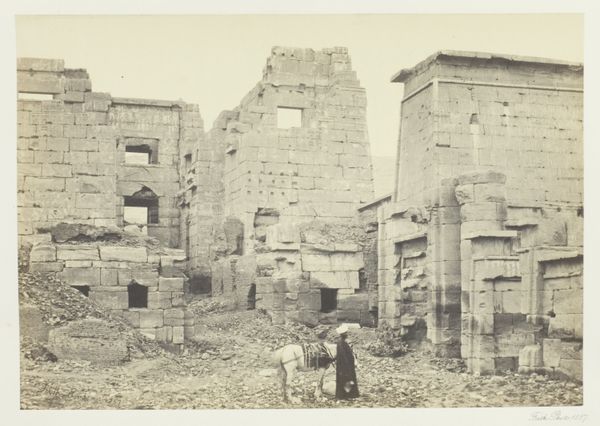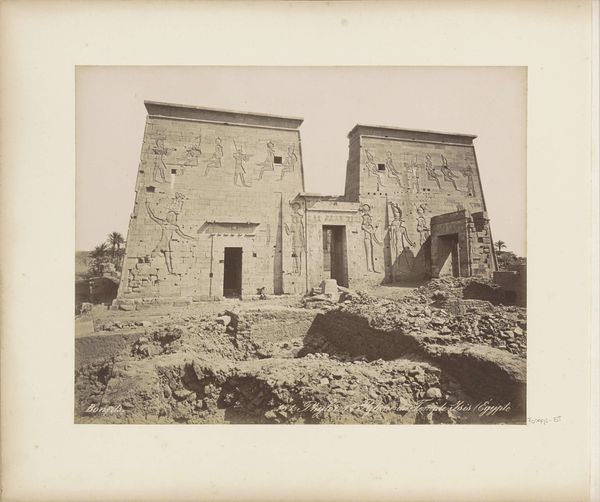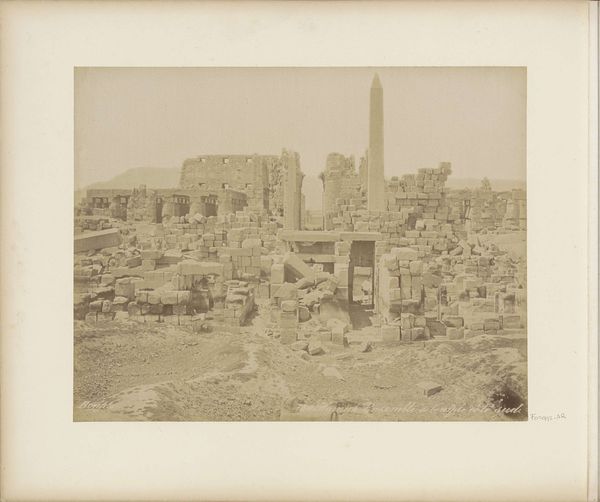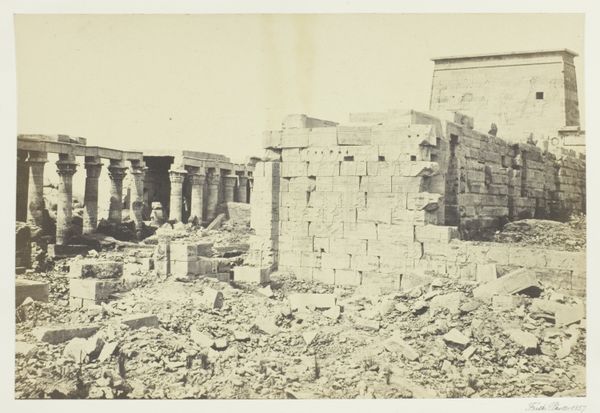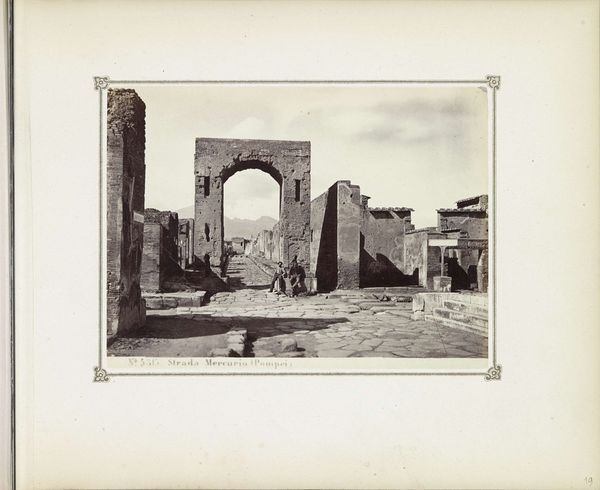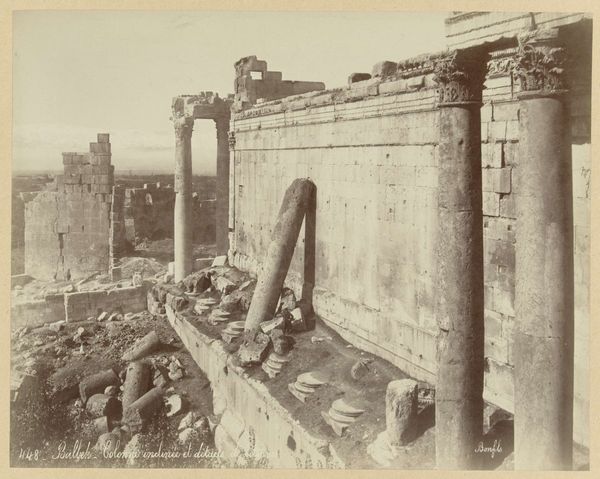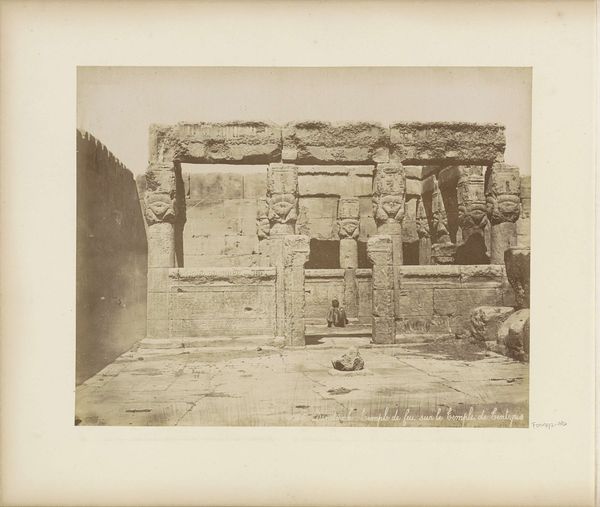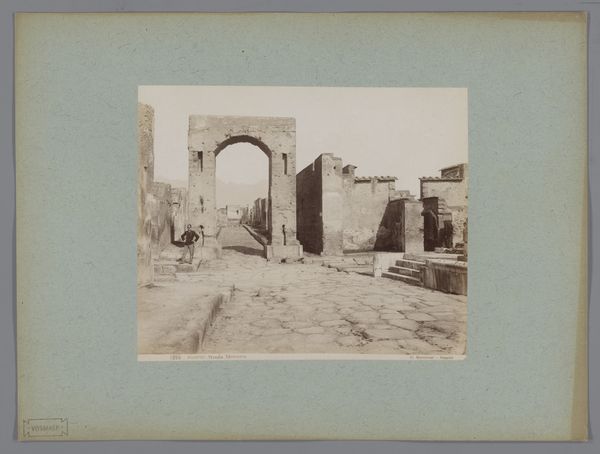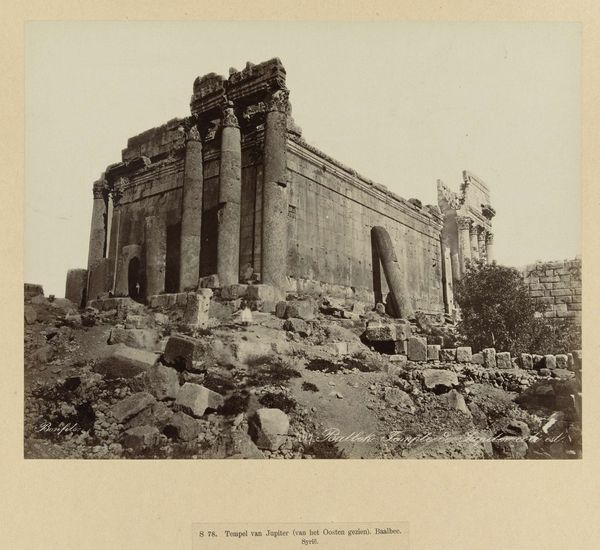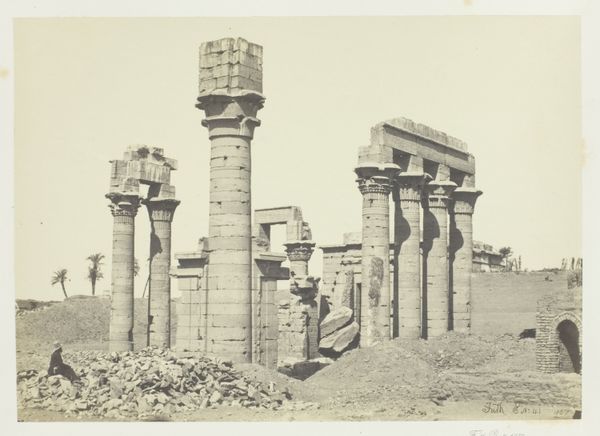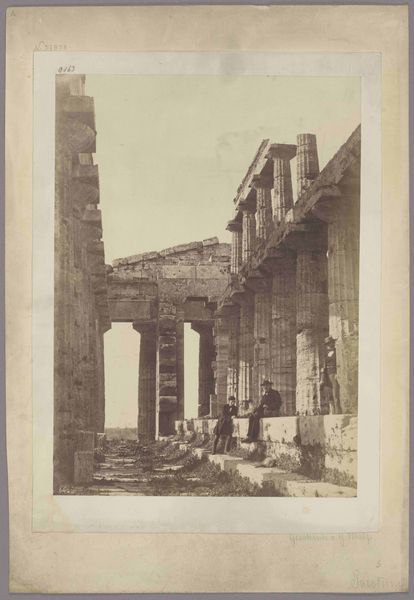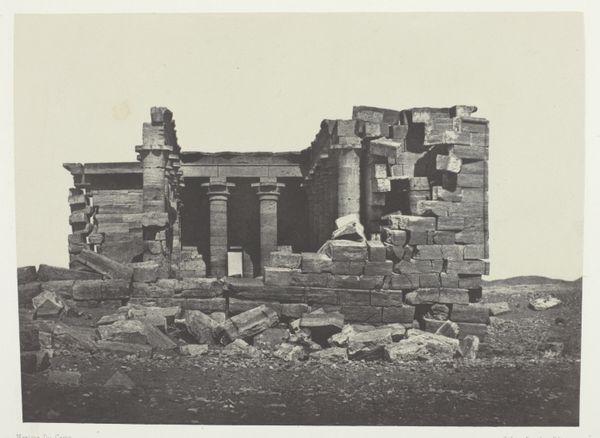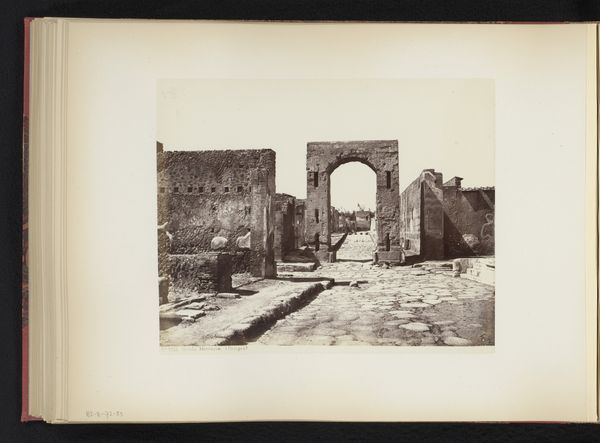
Tweede pyloon met reliëfs van de Tempel van Isis op Philae c. 1870 - 1890
0:00
0:00
#
pencil drawn
#
photo of handprinted image
#
aged paper
#
light pencil work
#
ink paper printed
#
parchment
#
pencil sketch
#
old engraving style
#
watercolour illustration
#
watercolor
Dimensions: height 217 mm, width 276 mm
Copyright: Rijks Museum: Open Domain
C. and G. Zangaki made this photograph of the second pylon with reliefs of the Temple of Isis at Philae. Taken in Egypt, this image reflects the intersection of ancient grandeur and the rise of photography as a tool for exploration and documentation. The Temple of Isis, dedicated to the powerful goddess, was a site of religious importance for centuries. The image captures the architectural and iconographic features of the temple, like the reliefs, offering insights into ancient Egyptian beliefs and artistic conventions. Photography at this time played a crucial role in shaping Western perceptions of Egypt, often romanticizing its past and reinforcing colonial narratives. The image creates meaning through its visual representation of a distant and exotic culture, viewed through a Western lens. Understanding the photograph requires knowledge of both ancient Egyptian history and the development of photography as a social and artistic practice. It embodies the complex interplay between culture, representation, and historical interpretation.
Comments
No comments
Be the first to comment and join the conversation on the ultimate creative platform.

